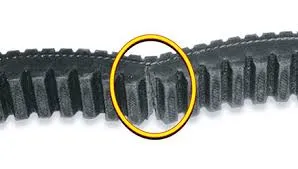- Arabic
- French
- Russian
- Spanish
- Portuguese
- Turkish
- Armenian
- English
- Albanian
- Amharic
- Azerbaijani
- Basque
- Belarusian
- Bengali
- Bosnian
- Bulgarian
- Catalan
- Cebuano
- Corsican
- Croatian
- Czech
- Danish
- Dutch
- Afrikaans
- Esperanto
- Estonian
- Finnish
- Frisian
- Galician
- Georgian
- German
- Greek
- Gujarati
- Haitian Creole
- hausa
- hawaiian
- Hebrew
- Hindi
- Miao
- Hungarian
- Icelandic
- igbo
- Indonesian
- irish
- Italian
- Japanese
- Javanese
- Kannada
- kazakh
- Khmer
- Rwandese
- Korean
- Kurdish
- Kyrgyz
- Lao
- Latin
- Latvian
- Lithuanian
- Luxembourgish
- Macedonian
- Malgashi
- Malay
- Malayalam
- Maltese
- Maori
- Marathi
- Mongolian
- Myanmar
- Nepali
- Norwegian
- Norwegian
- Occitan
- Pashto
- Persian
- Polish
- Punjabi
- Romanian
- Samoan
- Scottish Gaelic
- Serbian
- Sesotho
- Shona
- Sindhi
- Sinhala
- Slovak
- Slovenian
- Somali
- Sundanese
- Swahili
- Swedish
- Tagalog
- Tajik
- Tamil
- Tatar
- Telugu
- Thai
- Turkmen
- Ukrainian
- Urdu
- Uighur
- Uzbek
- Vietnamese
- Welsh
- Bantu
- Yiddish
- Yoruba
- Zulu
វិច្ឆិកា . 27, 2024 05:14 Back to list
Understanding the Importance of a Serpentine Belt in Your Vehicle's Performance
Understanding the Serpentine Belt A Vital Component of Your Vehicle
When it comes to maintaining a vehicle, the serpentine belt is often overlooked yet plays a crucial role in ensuring that various engine components function seamlessly. A serpentine belt is a long, winding rubber belt responsible for driving multiple peripherals in an engine, including the alternator, power steering pump, water pump, and air conditioning compressor. Understanding its function, signs of wear, and maintenance can save drivers from unexpected breakdowns and costly repairs.
What is a Serpentine Belt?
The serpentine belt gets its name from its distinctive shape, which resembles a serpent winding around a series of pulleys. Most modern vehicles employ this single belt system to replace multiple V-belts that were commonly used in older models. This design provides several advantages it requires less space, reduces weight, and minimizes the risk of belt failure since it operates as one cohesive unit.
Typically made of durable rubber with reinforced fibers, serpentine belts are designed to withstand the rigors of everyday use, including temperature fluctuations and exposure to oil and dirt. However, over time, wear and tear is inevitable, leading to performance issues.
Signs of a Worn Serpentine Belt
Recognizing the signs of a deteriorating serpentine belt is essential for timely maintenance
. Common indicators include1. Unusual Noises A squeaking or squealing sound coming from the front of the engine compartment often signifies that the belt is slipping or has worn grooves. This noise can become more pronounced during vehicle acceleration or when using electrical accessories.
a serpentine belt

2. Loss of Power Steering If you notice difficulty in steering your vehicle, it could be due to a failing serpentine belt that is no longer driving the power steering pump effectively.
3. Warning Lights Many modern vehicles are equipped with warning indicators that alert drivers to a belt problem. The battery or check engine light may illuminate if the alternator is not receiving power due to a belt failure.
4. Visible Damage Inspecting the serpentine belt for cracks, fraying, or glazing can provide direct evidence of wear. If you spot any of these issues, it’s advisable to replace the belt before it fails completely.
Maintenance and Replacement
The lifespan of a serpentine belt can vary depending on driving habits and environmental conditions. However, many manufacturers recommend inspecting the belt every 30,000 to 50,000 miles and replacing it as part of routine maintenance, typically between 60,000 and 100,000 miles. Regular inspections can significantly reduce the risk of unexpected failures.
If you're not sure about the condition of your serpentine belt, it’s best to have it checked by a professional mechanic. They can assess its wear and provide recommendations on replacement intervals based on your vehicle’s specific needs.
Conclusion
The serpentine belt, though a relatively small component, has a significant impact on your vehicle's performance. Regular inspections and timely replacements can prevent serious mechanical failures and ensure that your vehicle operates smoothly. By taking the time to understand and properly maintain this vital part of your engine, you can avoid roadside emergencies and enjoy a safer driving experience. So next time you schedule a service appointment, don't forget to inquire about the condition of your serpentine belt—it might just save you from a future headache!
-
Korean Auto Parts Timing Belt 24312-37500 For Hyundai/Kia
NewsMar.07,2025
-
7PK2300 90916-T2024 RIBBED BELT POLY V BELT PK BELT
NewsMar.07,2025
-
Chinese Auto Belt Factory 310-2M-22 For BMW/Mercedes-Benz
NewsMar.07,2025
-
Chinese Auto Belt Factory 310-2M-22 For BMW/Mercedes-Benz
NewsMar.07,2025
-
90916-02660 PK Belt 6PK1680 For Toyota
NewsMar.07,2025
-
drive belt serpentine belt
NewsMar.07,2025

